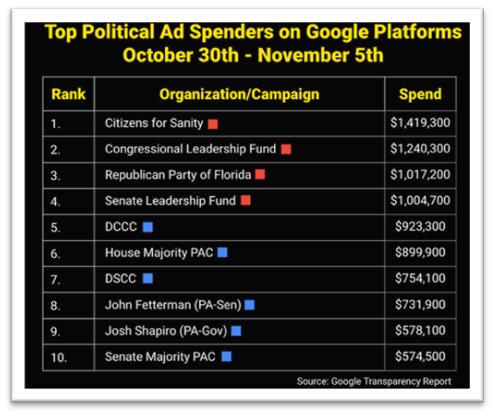You may think that 2024 is next year. Lucky you. For those of us who make their living getting people elected and ideas codified into law, the 2024 election year arrived just a few weeks ago, in late August, roughly six months from March 2024 Super Tuesday.
There’s still too much of an “anything can happen” vibe about next year so it’s foolish to predict much about 2024 except that a lot of money will be spent for digital advertising.
Our firm, Spot-On, would like to help publishers help themselves to the digital revenue that could be coming their way in what is expected to (again) be a record year for political spending on (again) digital ads. That’s why Spot-On built a new automated direct ad-buying platform called Pinpoint Persuasion (P3) which puts your sites and information about those sites in front of political ad buyers.
We understand your frustration. Last year, 2022, was clearly the year that publishers began wondering why political money was not going into their coffers through the front, direct buy door, as it historically has for print. It’s the year when many publishers noticed that political ad sales relied almost exclusively on programmatic and social media ads to reach voters in their circulation areas.
And the dollars were huge. Here's a snapshot of where political ad dollars went — just a week — before Election Day 2022.

Those buyers spent more than $8 million on Google search, display and YouTube in a seven-day period!
Worth noting on this chart are the spends by the legislative PACs (Senate Majority PAC, DSCC, House Majority PAC, DCCC for the Democrats and Senate Leadership Fund and Congressional Leadership Fund for Republicans).
These are big ad spends on behalf of multiple candidates in different states coming from a small group of East Coast media buyers. Many publishers have already tried to talk to these folks but have had limited success.
Why? Well programmatic ad buying is the easiest way for these organizations, which do not know local media markets, to buy digital ads. They can pay an inexperienced employee to sit in front of a buyer dashboard with a set budget and some targeting guidelines. They get one bill, often with credit terms. They can book volume — which impresses their clients — for pennies, not dollars, and avoid editorial review. They can quickly adjust messaging as they move through the election cycle with a few keystrokes. Bulk buys on these platforms allow them to use voter information for targeting, which is considered superior to any placement on a local outlet because most individual outlets can’t do sufficiently effective voter targeting.
Habits are hard to break, which is why a look at how things are shaping up so far for 2024 doesn't bode well for direct buys. Here’s a look at a recent estimate of spending on YouTube, Google and Facebook (aka Meta). It’s about $12 million so far this year and those spends are accelerating as you read this.

So, what's a news outlet to do? We've said it before when the money wasn't as serious, so we'll say it again. Take political and advocacy ads off your programmatic channels. It can be done. Then start looking at your subscriber data. How many of your readers are registered voters? That number is higher than you think. Where do they live? What is their party registration?
Spot-On's experience tells us that political ad buyers will buy direct if it's not painful. And if they have insights into how your sites reach potential voters, even better. You'll be surprised at how well local news outlets perform with voters, community leaders and — probably most importantly — elected officials and their advisers. The repeated analysis that well-educated suburbanites swing elections means local news outlets can start to claim a place at the table — if you have the data to support the buy.
Spot-On has worked hard to get more political buyers to see the potential of direct sales using some of this information. And, as many of you know, we've made some progress. But having partners who know their readers and who understand that political ads are bought nationally, not locally, is a step that helps us help you.
Spot-On Founder Chris Nolan is planning to talk with many of you about Pinpoint Persuasion (P3) at the America’s Newspapers Senior Leadership Conference in Chicago next month. P3 and its ability to automate direct buying will put your site in front of buyers like the ones spending all that money on YouTube and Google. Even better? It’s free to you.
So, if you want to make sure we don't miss you in Chicago and that we include your outlets on the P3 platform as we move forward, drop us a note and we'll get you a demo and a pep talk — in person or on a call.
Chris Nolan is founder and CEO of Spot-On.